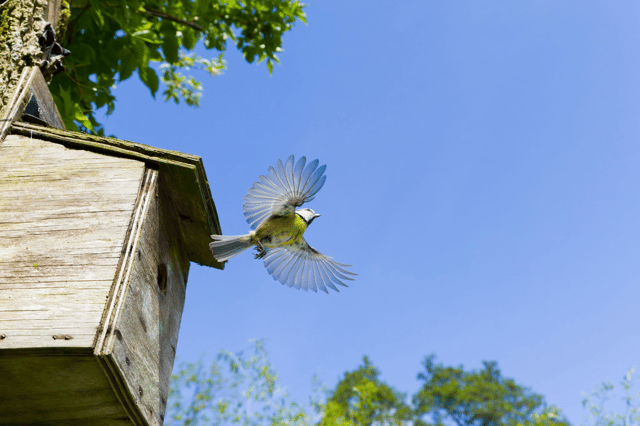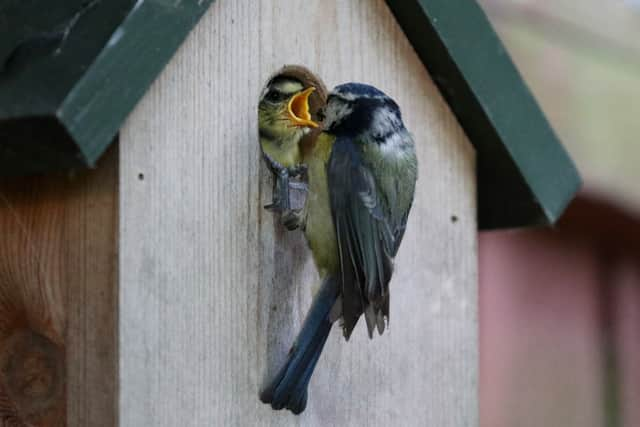RSPB: Expert's guide on how to set up a successful garden bird nest box this spring
This article contains affiliate links. We may earn a small commission on items purchased through this article, but that does not affect our editorial judgement.


Most of us celebrate when the dreary darkness and dampness of winter start to dissipate, with the beginning of spring heralding warmer, brighter days ahead.
But for local birdlife, it's a period of high stress. Spring means nesting season, a critical time when birds face the daunting task of finding a safe place to lay their eggs and raise their young. And unfortunately for them, there's more riding on it than ever before - with last year seeing a number of concerning reports published which show a "staggering" decline in wildlife across the UK, including many of our amazing garden bird species.
Advertisement
Hide AdAdvertisement
Hide AdThe Royal Society for the Protection of Birds (RSPB) says there are 38 million fewer birds in our skies than half a century ago, and despite being one of the most numerous birds since the Big Garden Birdwatch started in 1979, the number of house sparrows spotted in gardens has dropped by a staggering 57%. Noticeable declines have been seen in other birds too, with song thrush numbers down a whopping 80% since the survey began.
With this in mind, the RSPB Shop’s wildlife gardener Adrian Thomas has shared some of his best advice for how to turn your garden into a springtime haven for birds - from building your own nest boxes, to encouraging them to choose it. Here's everything you need to know:
Choosing the perfect spot and type of nest box for your garden
If you took part in the RSPB's big garden birdwatch, you might already have some idea of which birds frequent your garden. If not, you'll need to think about what kind of birds you'd like to attract, with all species having slightly different requirements.
Mr Thomas says there are three main types of nest box: those with round holes, those with 'letterbox-style' openings, and specialist designs. Most people will need one of the first two. For nest boxes with holes, the hole will need to be a different size depending in what kind of bird you think might use it.
Advertisement
Hide AdAdvertisement
Hide AdWhether you're building or buying, here are some of the diameters required for common species:
Blue Tit (25-28mm hole)
Great Tit (28mm hole)
House Sparrow (32mm hole)
Tree Sparrow (28mm hole)
Nuthatch (32mm hole)
Starling (45mm hole)
Letterbox-style nest boxes appeal to birds that love to nestle into the hedgerows and bushes, such as wrens and robins. But Mr Thomas says where you place your nest box is also important for encouraging birds to choose it. "Robins and wrens really love their nest box to be tucked away behind tangles of vegetation, such as a climber like ivy," he added.
When choosing a spot for other species, it's handy to think vertically. Many birds prefer nesting high above the ground for safety and security. Look for tall trees or sturdy structures like poles or posts where you can mount the nest box at least three metres off the ground. While setting it up near a bird feeder may seem sensible, a lot of activity may actually deter nesting birds. Instead, you should position it in a quieter area.
Finally, you should consider the weather. Here in the UK, it's generally recommended to set up a nest box facing north or east, somewhere protected from harsh weather conditions. Try to pick a spot that won’t receive continual sunlight too, as this may cause the box to overheat.
Advertisement
Hide AdAdvertisement
Hide AdBuild or buy?
Some species favour very specific conditions, and you're better off buying if you'd like to help these birds out. The inside of this swift nesting box is cup-shaped for example, whereas this terracotta nest box is built to the exact dimensions favoured by the humble house martin.
However if you're particularly handy, the RSPB says it's not too hard to build a basic birdbox yourself. There's a full, illustrated guide available for free online here.
The conservation charity's shop also offers a range of birdboxes for every budget and species. If it's your first time using one or you're not sure what kind of garden birds you have locally, Mr Thomas has a recommendation: "The RSPB’s classic Apex bird box makes the ideal nesting site for a variety of species, providing optimal insulation and protection from the elements."


Encouraging birds to pick your nest box
As well as providing a place to nest, there is more you can do around your garden to make it safe and inviting for birds. Not only will this encourage them to nest nearby, but you can use some of these tips even if your green space is a little smaller - such as a balcony with a few potted plants.
Advertisement
Hide AdAdvertisement
Hide AdHaving ready-to-use nesting materials on offer can help save prospective bird parents time and effort. You can leave out materials like small twigs, dry leaves, pet hair, or even feathers in your garden, balcony or nearby trees for birds to use.
Raising chicks from eggs to adulthood also takes a lot of energy, and your garden birds will appreciate having easy access to food and clean water. Setting up bird feeders with suitable birdseed is a huge help, the RSPB says, and even shallow dishes or trays with fresh water can attract birds wanting to drink or bathe.
Speaking of food, a longer-term solution to help wildlife in your garden is to plant native trees and shrubs - particularly those that flower or grow berries. Here are some of the Woodland Trust's top picks. Autumn fruit-bearing trees like hawthorn or alder provide a much-needed food source during the cold winter months, while many blossoms attract insects - another important food source for birds. In order to avoid wiping these insects out, the RSPB also recommends ditching the pesticides in your garden, and letting nature find its own balance.
Protecting birds and their babies throughout the nesting season
One of the first signs you'll see that your efforts to attract birds to your nest box have been successful will be birds gathering twigs, leaves, and other bits and pieces, and bringing them inside. The RSPB says this is a clear sign they are preparing to nest.
Advertisement
Hide AdAdvertisement
Hide AdEgg-laying tends to come soon after nest-building. While the new parents will have their wings full incubating their eggs and protecting the nest, there won't be much action required from you at this stage - which should take a couple of weeks. You should soon start to hear chirping from the box after the eggs hatch, and notice the parents coming and going more often, to feed their babies.
The most important thing you can do to help in this period is keep pets, especially cats, indoors - particularly if your nest box would be within their reach. Birds on their nests and chicks are both vulnerable, and make easy pickings for predators.
Eventually, the chicks will outgrow the nest and fledge. This is an exciting event to witness, but it is important to give the fledglings space and not interfere. Dogs may also need to be kept indoors or supervised during this period, as the young birds may spend some time on the ground before they are able to fly confidently.
These young birds are usually still being fed and cared for by their parents, so if you see them, they're most likely fine. However, if their parents haven't visited them for hours and them seem weak or lethargic, or if a cat has touched them at all - with bacteria in their saliva toxic to birds - you should contact a local wildlife rescue. You can find more information, including links to rehabilitators and centres near you here.
Comment Guidelines
National World encourages reader discussion on our stories. User feedback, insights and back-and-forth exchanges add a rich layer of context to reporting. Please review our Community Guidelines before commenting.
